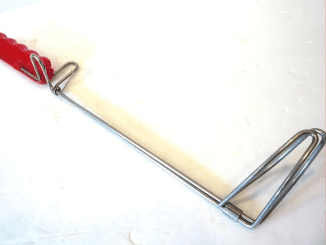Record, Utilization, and Legacy of Classic Mechanical Rope Twisters
History
Mechanical rope twisters, or rope-building devices, day again to ancient instances when resilient ropes had been critical for sailing, design, and agriculture. Early rope producing was manual and labor-intense, involving hand-twisting fibers. The creation of mechanical rope twisters revolutionized this method.
These equipment first appeared throughout the Industrial Revolution in the 18th century. At first run by hand or foot, and later on by steam engines, they appreciably boosted productivity and consistency in rope producing. The desire for ropes in maritime and industrial apps drove their progress. Innovators like Charles Spencer and John Boyd Dunlop made critical advancements in the 19th century.
Utilization
Mechanical rope twisters twist person strands of fiber—such as hemp, cotton, or sisal—into a cohesive rope. The essential system utilizes a number of spools of fiber fed into the device. Rotating hooks or gears twist the fibers alongside one another, generating a rope with uniform pressure and toughness.
The system starts off by getting ready the fibers, combing and aligning them. These fibers then feed into the twisting equipment, which can develop ropes of various thicknesses and lengths centered on the machine’s configurations. The twisted rope winds onto massive spools or gets minimize into unique lengths for use.
These devices were crucial in many industries:
- Maritime Industry: Providing ropes for sailing ships, fishing, and docking.
- Design: Giving ropes for lifting, rigging, and securing resources.
- Agriculture: Creating ropes for binding and tethering.
- Army: Producing ropes for naval vessels and navy engineering.
Legacy
Vintage mechanical rope twisters have still left a lasting impact on technological innovation and marketplace. They enabled mass generation and set specifications for rope energy and durability that keep on being pertinent currently.
In the modern-day era, synthetic fibers and superior machinery have largely replaced traditional solutions, but vintage mechanical rope twisters are continue to cherished for their historical significance and engineering ingenuity. Collectors and museums protect these equipment as practical displays, showcasing the evolution of industrial engineering.
The principles of mechanical rope twisting continue on to affect present-day producing processes. The consistency and efficiency of these vintage devices established benchmarks that modern-day machinery aims to emulate.
Furthermore, classic mechanical rope twisters encourage a specialized niche neighborhood of artisans and hobbyists committed to standard rope creating. These fans keep the craft alive, frequently applying restored classic equipment to produce ropes for historic reenactments, crafts, and bespoke programs.
In conclusion, the heritage of mechanical rope twisters highlights human ingenuity in addressing functional requires by way of mechanical innovation. Their use across numerous industries underscores their importance in acquiring contemporary industrial tactics. The legacy of these machines endures, celebrated by historians and present day craftsmen who acknowledge their pivotal role in advancing rope generating.


